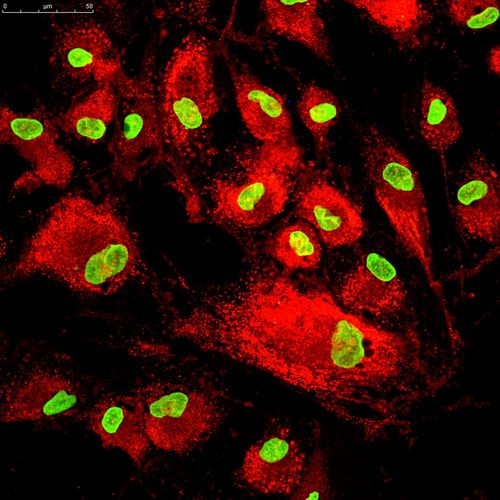Heart Attack Damage Healed With Nanoparticles Covered In Antibodies, Steering Cells To Injury Site

It may soon be possible to use stem cells for targeted organ repair with the help of antibody-studded iron nanoparticles.
While specialized stem cells are used to regenerate injured heart muscles, there was always a question of whether the cells would reach their target once injected into the blood stream to start the repair mechanism. To get around this problem, researchers at the Cedars-Sinai Heart Institute used the combined nanoparticle, which guarantees that the stem cell reaches the targeted organ to start the repair. The research, published in the journal Nature Communications, addresses the issue of how to achieve targeted interactions between stem cells and injured cells.
Stem cells can be used to replace damaged heart tissues and restore cardiac function. Cardiac dysfunction that is a result of heart attack occurs due to weakened or damaged heart muscles. Allowing stem cells to replace and replenish these damaged cells will allow the heart to regain its pumping power. Getting a person’s damaged heart to restore its functioning is a great alternative to heart transplants.
The procedure involves growing stem cells in the laboratory and allowing them to turn to specialized cells that are then infused into the patient’s blood stream. But here was the roadblock. What if the stem cells never reached their intended target?
"Infusing stem cells into arteries in order to regenerate injured heart muscle can be inefficient," said lead researcher Dr. Eduardo Marbán, director of the Cedars-Sinai Heart Institute, in a statement. "Because the heart is continuously pumping, the stem cells can be pushed out of the heart chamber before they even get a chance to begin to heal the injury."
To ensure they did reach the site of injury, researchers coated iron nanoparticles with two kinds of antibodies, proteins that recognize and bind specifically to stem cells and to injured cells in the body. Once in the blood stream, the nanoparticles successfully tracked the injured area and initiated healing.
"The result is a kind of molecular matchmaking," Marbán said. "Through magnetic resonance imaging, we were able to see the iron-tagged cells traveling to the site of injury where the healing could begin. Furthermore, targeting was enhanced even further by placing a magnet above the injured heart."
Evidence that stem cells can successfully repair heart muscles had already been proven by Marbán and his team, when in 2009 they successfully infused a patient’s own stem cells back into his heart. The stem cells were first grown into specialized cells like the cardiomyocytes and vascular endothelial cells, both required for maintaining heart health. Once infused, the stem cells started repairing the heart that had been damaged due to a heart attack.
Results of this successful experiment were published in The Lancet in 2012, and showed that one year after receiving the stem cell treatment, the heart attack patient demonstrated a significant reduction in the size of the scar left on the heart muscle.
Cedars-Sinai Heart Institute is pioneering the research of developing stem cells for restoring myocardial function. The institute researchers are now working on a project called ALLSTAR, in which heart attack patients are being infused with allogeneic stem cells, which are derived from donor-quality hearts.
Such interventions can greatly benefit the 5.1 million people who suffer from congestive heart failure due to ineffective pumping by an injured heart.
Published by Medicaldaily.com



























